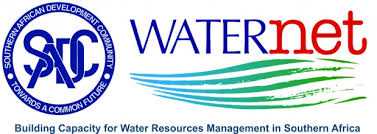
Agriculture is the largest consumer of the world's freshwater resources, and more than one-quarter of the energy used globally is expended on food production and supply. Agricultural is by default land-based and there is competition for available land to live on and to grow food. Water, energy and land are therefore key resources required for sustainable living and livelihoods. Population growth, rapid urbanisation, changing diets and economic development are some of the factors driving increased demand for water, energy and land, which compete with agriculture. The inter-linkages between the three resources form a nexus, which needs to be better understood.
Feeding a global population expected to reach 9 billion people by 2050 will require a 60 percent increase in food production. There is, thus, a need to enhance agricultural production, sustainable land use and water resources through improved land tenure, management, development and conservation. Meeting the demand for agricultural products while reducing the demand for and protecting quality of land and water quantity and quality is a major challenge in most regions.
The proportion of irrigated area as a fraction of the total arable land is low across the SADC region. Water and energy demand for agricultural is set to increase. Better methods of accounting for biophysical resources and their utilisation are required. However, the assessment is based on crude methodologies, which are badly in need of revision. Biophysical resources that need to be assessed include determination of irrigation potential vs arable land, suitability of agricultural performance indicators (water use efficiency, water productivity), and water use by various land uses (such as forestry, biofuel feedstock).
Access to energy is essential for the reduction of poverty and promotion of economic growth. Agricultural improvement and expansion of municipal water systems all require access to abundant, reliable, and affordable sources of energy. The applications of renewable energy technology has the potential to alleviate many of the problems that face Africans every day, especially if done so in a sustainable manner that prioritises human rights. However, the use of renewable energy for irrigation purposes is still very low across Eastern and Southern Africa.
The papers under this theme focus on the interaction between land, water and energy as an important nexus that needs to be clearly understood, particularly the use of solar energy, rain-fed vs irrigated production and other best practices to reduce pressure on the strained water resources systems. How can water, land and energy be managed in an integrated manner in the face of increased water scarcity, dominance of water use for agriculture, and need for energy (including renewable energy) to treat and pump water?
Agriculture is the largest consumer of the world's freshwater resources, and more than one-quarter of the energy used globally is expended on food production and supply. Agricultural is by default land-based and there is competition for available land to live on and to grow food. Water, energy and land are therefore key resources required for sustainable living and livelihoods. Population growth, rapid urbanisation, changing diets and economic development are some of the factors driving increased demand for water, energy and land, which compete with agriculture. The inter-linkages between the three resources form a nexus, which needs to be better understood.
Feeding a global population expected to reach 9 billion people by 2050 will require a 60 percent increase in food production. There is, thus, a need to enhance agricultural production, sustainable land use and water resources through improved land tenure, management, development and conservation. Meeting the demand for agricultural products while reducing the demand for and protecting quality of land and water quantity and quality is a major challenge in most regions.
The proportion of irrigated area as a fraction of the total arable land is low across the SADC region. Water and energy demand for agricultural is set to increase. Better methods of accounting for biophysical resources and their utilisation are required. However, the assessment is based on crude methodologies, which are badly in need of revision. Biophysical resources that need to be assessed include determination of irrigation potential vs arable land, suitability of agricultural performance indicators (water use efficiency, water productivity), and water use by various land uses (such as forestry, biofuel feedstock).
Access ...
21st WaterNet/WARFSA/GWPSA Symposium waternet@waternetonline.orgTechnical Issues?
If you're experiencing playback problems, try adjusting the quality or refreshing the page.
Questions for Speakers?
Use the Q&A tab to submit questions that may be addressed in follow-up sessions.